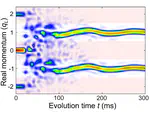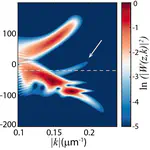Publication
Compact Components
Group McGilligan

THz Generation
The band within the electromagnetic spectrum between about 300 GHz and 3 THz is often referred to as terahertz radiation. Terahertz radiation is considered to be an upcoming technology in material inspection, quality control, gas sensing, surveillance and security applications, and wireless, short-haul communication. We study a method to produce THz radiation by mixing two cw infrared lasers in a special kind of semiconductor (low-temperature grown GaAs).

Nonlinear Optics of Quantum Dots
Semiconductor quantum dots are an exciting new material for photonics and quantum information because their properties can be tailored to a wide extent. In a first approximation, they can be considered as artificial atoms which strongly interact with their environment. This provides challenges as well as opportunities.
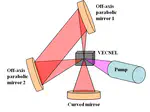
VECSEL and spin-optoelectronics
Group Ackemann

Solitons and vector vortex beams in broad-area VCSELs
Light does not stay confined to small regions in space or time, but wave packets of light have the natural tendency to broaden. For technical applications, it is important to counteract this natural tendency and to confine light to the smallest possible dimensions. Though great partial success was achieved by linear optical element as optical fibres, it was always the dream of researchers to confine light by self-action. This is why the concept of solitary waves received a lot of attraction during the last decades.
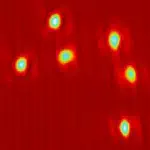
Nonlinear Laser Dynamics and Spin VCSELs
Vertical-cavity surface-emitting lasers (VCSELs) are a rather new type of semiconductor laser diode, in which – in contrast to conventional edge emitters – the direction of the light emission is parallel to the epitaxial growth direction. We study the connection between the carrier spin and the polarization of the emitted light of VCSELs.
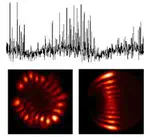
Nonlinear Optics in Cold Atoms
We performed detailed experimental and theoretical investigations on the mechanism and strength of the lensing effect in sodium vapour with circular input polarization.
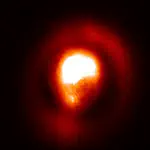
Scalable Qubit Arrays (SQuAre)
This project is an EPSRC Prosperity Partnership with M Squared Lasers that aims to develop a new platform for quantum computing based on scalable arrays of neutral atoms that is able to overcome the challenges to scaling of competing technologies. We will develop new hardware to cool and trap arrays of over 100 qubits that will be used to perform both analogue and digital quantum simulation by exploiting the strong long-range interactions of highly excited Rydberg atoms. Together with the quantum software team lead by Prof. Andrew Daley, we will design new analogue and digital algorithms tailored for the neutral-atom platform to target industrially-relevant computation and optimisation problems.

